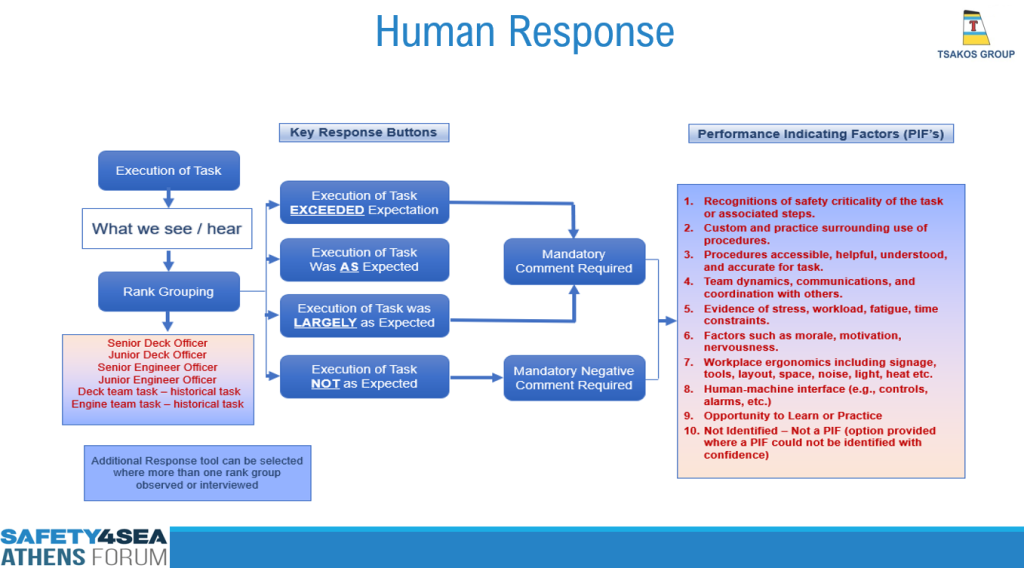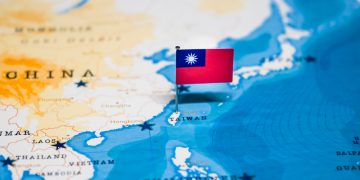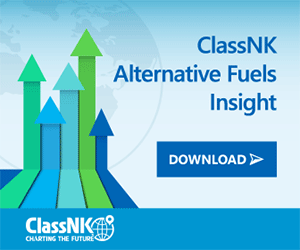During the 2024 SAFETY4SEA Athens Forum, Anastasios Kartsimadakis, Group Vetting & Inspections Manager, Tsakos Shipping and Trading, gave a presentation that focused on the role of human factors in the revised SIRE 2.0 inspection regime. He explored how human behavior, decision-making, and performance impact safety and compliance in maritime operations.
Understanding the need for human factors
The human factor has become a critical focus within the industry, driven by a growing recognition that improvements in facilities, equipment, and management systems alone are insufficient to significantly reduce accidents.
Rather than viewing human error solely as a cause of incidents, it is increasingly understood as a crucial barrier that helps prevent them. This shift highlights the importance of adopting a more effective approach to addressing human factors in safety and operational practices.
Background of SIRE 2.0
SIRE 2.0 was created in alignment with the broader goal of identifying and addressing risks faced by crews, ships, and terminals. It builds upon existing programs to locate and address operational weaknesses. This new framework does not suggest that the VIQ (Vessel Inspection Questionnaire) was inadequate; rather, SIRE 2.0 recognizes specific high-risk priorities and targets operations where risk is particularly high. Through inspections and their outcomes, SIRE 2.0 aims to understand and address both positive and negative factors influencing people’s behavior, with a long-term goal of improving safety.
Launch of SIRE 2.0 and phased rollout
Until recently, a common question in the industry was when SIRE 2.0 would become active. On September 2, 2024, SIRE 2.0 officially launched after a series of phased trial inspections. These trials produced varied results and feedback, and SIRE 2.0 has now become the sole inspection framework available for tanker operators. Although it is early to reach conclusions, initial findings provide a clearer understanding of the framework.
Core framework of SIRE 2.0: Three pillars
The SIRE 2.0 framework relies on three primary pillars: hardware, processes, and the human element.
- Hardware – Inspectors evaluate the physical equipment and hardware used in operations.
- Process – Procedures behind the hardware and operational practices.
- Human element – The focus here is on human factors, with interviews including questions on how well personnel are trained and familiar with tasks, especially those with high risk.
Focus area: enclosed space entry permits
An essential question within SIRE 2.0 concerns enclosed space entry permits. This question seeks to confirm whether all individuals onboard, from the master to officers and ratings, are adequately familiar with company procedures related to enclosed spaces. Given the risks associated with enclosed spaces, it is crucial for inspectors to ensure that crew members adhere strictly to these procedures.
In practice, inspectors review enclosed space entry procedures and interview at least one rating. Ratings are prioritized because they are more likely to make mistakes under operational pressures, making it essential to assess their familiarity with safety protocols.
While this process is comprehensive, there is ongoing discussion about whether a single question or observation is sufficient for determining a vessel’s compliance. The industry needs to actually address the risks of eclosed space entry and inform interested parties about them.
Assessment and reporting: SIRE 2.0 ratings and observations
The SIRE 2.0 report format introduces ratings for human factors, with terminology such as “as expected,” “largely as expected,” and “exceeds expectations.”
- Exceeds expectations: Considered best practice and noted as the only way to receive a “best practice” rating.
- As expected: Indicates that the task meets standard requirements.
- Largely as expected: While there is no negative finding here, it implies room for improvement and may prompt further questions from reviewers.
- Not as expected: Indicates that the task did not meet expectations and results in a negative observation.
Every nature of concern (NOC) needs to be linked with at least one performance-influencing factor. Every performance indicator, whether positive or negative, is selected by the inspector.

However, while the selection process is robust, some feel the criteria could benefit from additional input from industry experts. Indicators like “safety criticality” are straightforward, but others, such as “opportunity to learn” or “opportunity to practice,” may be too general and require more detailed input.
Early observations and trends
Data from inspections since September 1st is not yet available for analysis. However, initial observations by INTERTANKO on Phase III of the roll-out show that the majority of negative findings relate to processes, followed by human factors, and hardware. Only 7% of observations so far have been positive, indicating that reaching beyond the “expected” level is challenging in current operations.
Crew preparation and expectations for SIRE 2.0 inspections
Inspectors will aim to create a confident and relaxed environment, despite the potential pressure inspections may cause.
Furthermore, inspectors will recognize best practices, address areas that should by improved in terms of performance influencing factors (PIFs), and avoid recording specific names or ranks, instead focusing on areas where human factors can improve.
To prepare, crew members should be thoroughly familiar with the Safety Management System (SMS), able to demonstrate and explain it. Designated crew should be well-prepared and relaxed, ready to respond to questions, which will help reduce the risk of negative observations. Tips for better preparation include:
- Helping the inspector to get an accurate picture: Refer SMS forms and read the posted instructions.
- Inspectors want to talk to people who normally do the job: Make people available who know the area or tasks involved.
- For a task that everyone needs to know (safety, fire fighting, lifesaving) an inspector may ask a rating to demonstrate: Practice during drills, ask ratings to be involved and to be confident for their actions (entry permits, duties in case of emergency).
- Inspectors will follow a set route around the ship’s systems: Be one step ahead and prepare the next area-Help the inspector to follow the plan.
- Inspectors want people to be comfortable and understand what the inspection is about: Brief the crew before the inspection what to expect – Review training videos and training material. Focus on potential grounds for observations.
Examples of observation reports
In SIRE 2.0, responses to observations are structured, with separate responses required for hardware, process, and human factors. If an observation involves both hardware and human factors the operator must address each element individually.
Challenges and considerations for future implementation
The focus on human factors in SIRE 2.0 introduces certain challenges, including an increased trend of negative observations. Furthermore, some challenging areas include inconsistent training and expertise levels among inspectors, variation in observation counting methodologies, and an increased workload for crew and office personnel alike.
For instance, energy companies often conduct multiple safety inspections outside of the SIRE system, leading to additional compliance demands.
Furthermore, although the intent of SIRE 2.0 was to simplify SMS, certain requirements are resulting in more detailed procedures and documentation to meet inspection standards.
Finally, other administrative challenges include issues around loading acceptance, restricted inspection cancellations, and various procedural matters that impact both inspectors and crew.
Looking forward
The people operating the vessels, the vessels themselves, and the inspectors remain the same, but SIRE 2.0 introduces a new standard that brings its own set of challenges.
Thus, as the industry adapts to SIRE 2.0, ongoing monitoring and refinement will be essential.
The views presented are only those of the author and do not necessarily reflect those of SAFETY4SEA and are for information sharing and discussion purposes only.
Above article has been edited from Anastasios Kartsimadakis’ presentation during the 2024 SAFETY4SEA4SEA Athens Forum.
Explore more by watching his video presentation here below




































































